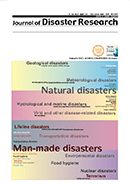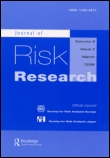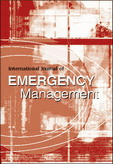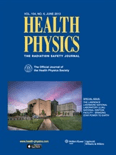
Journal of Safety Science and Resilience
Scope & Guideline
Elevating standards in risk and reliability research.
Introduction
Aims and Scopes
- Disaster Risk Assessment and Management:
The journal emphasizes methodologies for assessing risks associated with various disasters, including natural disasters and man-made incidents. This includes quantitative models and frameworks for predicting and mitigating risks. - Emergency Response and Evacuation Strategies:
Research on effective strategies for emergency response, including evacuation modeling and behavioral studies during crises, is a core area. This encompasses both theoretical frameworks and practical applications. - Technological Innovations in Safety Science:
The journal publishes studies that leverage cutting-edge technologies, such as AI, machine learning, and computer vision, to enhance safety measures and emergency preparedness. - Community Resilience and Safety:
A focus on assessing and enhancing community resilience to disasters and public health emergencies, including frameworks for evaluating community preparedness and response capabilities. - Interdisciplinary Approaches to Safety:
The journal encourages interdisciplinary research that integrates insights from various fields, including engineering, public health, sociology, and environmental science, to address complex safety challenges.
Trending and Emerging
- Integration of AI and Machine Learning in Safety Applications:
There is a growing trend towards utilizing AI and machine learning for predictive analytics in safety science, enhancing capabilities in risk assessment and emergency response. - Resilience Frameworks for Urban Communities:
Recent publications emphasize the development of comprehensive frameworks for assessing and enhancing urban resilience against multiple hazards, particularly in the wake of the COVID-19 pandemic. - Health and Safety in Crisis Situations:
Research focusing on health and safety during public health emergencies, such as the COVID-19 pandemic, has gained prominence, addressing the intersection of health crises and community resilience. - Cyber-Physical Systems and Safety:
Emerging research on the safety and resilience of cyber-physical systems indicates a trend towards understanding and mitigating risks in interconnected technological environments. - Behavioral Studies in Emergency Management:
There is an increasing focus on understanding human behavior in emergency situations, including studies on evacuation dynamics and decision-making processes under stress.
Declining or Waning
- Traditional Fire Safety Engineering:
There has been a noticeable decline in papers focused solely on traditional fire safety engineering principles, as the field increasingly integrates advanced technologies and interdisciplinary approaches. - Static Risk Assessment Models:
Research relying on static models for risk assessment has diminished, with a trend towards dynamic and real-time risk assessment methodologies that incorporate data-driven insights. - General Public Safety Policies:
Papers focused on broad public safety policies without a specific context or application have seen a decrease, as the journal shifts towards more targeted research that addresses specific safety challenges. - Historical Analysis of Safety Incidents:
The focus on historical case studies of safety incidents has waned, with more emphasis being placed on predictive modeling and proactive strategies for future prevention.
Similar Journals

Journal of Health and Safety at Work
Bridging knowledge and practice in health and safety at work.The Journal of Health and Safety at Work, published by the Iranian Occupational Health Association, is a vital resource for researchers, professionals, and students engaged in the fields of occupational health, safety, and environmental management. With an ISSN of 2251-807X and E-ISSN 2383-2088, this Open Access journal has been dedicated to disseminating knowledge since 2012, ensuring that critical research is accessible to a global audience. The journal’s scope encompasses a diverse range of topics including human factors and ergonomics, safety research, and public health, with a focus on enhancing workplace safety and environmental standards. Although currently positioned in the Q4 category across various disciplines within safety and health research, the journal offers a unique platform for emerging studies and innovative practices, making it a significant contributor to the discourse in these fields. The journal's commitment to open access aligns with the growing trend of transparent scholarship, thus facilitating the sharing of vital insights to improve workplace health and safety outcomes. Researchers aiming to publish groundbreaking studies in this pivotal area will find the Journal of Health and Safety at Work an indispensable avenue for advancing knowledge and fostering professional collaboration.

International Journal of Disaster Risk Science
Transforming knowledge into action in disaster risk management.The International Journal of Disaster Risk Science, with ISSN 2095-0055 and E-ISSN 2192-6395, is a premier, peer-reviewed open-access journal published by Springer. Since its inception in 2011, the journal has been dedicated to advancing knowledge and practice in the field of disaster risk science, facilitating critical discussions around disaster preparedness, response, and resilience across various regions of the globe. This journal holds impressive rankings, including Q1 in Geography, Planning and Development, and Q1 in Safety Research for 2023, confirming its high impact within the academic community. With converged publication years from 2010 to 2024 and being ranked in the top 10% in multiple categories, it serves as an essential resource for researchers, professionals, and students alike. As an open-access journal, it ensures that cutting-edge research is freely available, promoting wider dissemination and engagement with topical issues in disaster risk management.

Journal of Disaster Research
Empowering communities with cutting-edge disaster management insights.Journal of Disaster Research, published by FUJI TECHNOLOGY PRESS LTD, is a prominent Open Access journal that has been disseminating critical research on disaster management since its inception in 2007. Focusing on the interrelated fields of engineering and safety, the journal aims to advance knowledge and policy in disaster risk reduction, response, and resilience, making it an essential resource for researchers, practitioners, and policymakers alike. With an ISSN of 1881-2473 and E-ISSN 1883-8030, the journal covers a wide range of topics related to disaster studies, ensuring the dissemination of innovative solutions and diverse perspectives. Situated in Japan, the journal has been ranked Q3 in both Engineering (Miscellaneous) and Safety, Risk, Reliability, and Quality categories, showcasing its commitment to quality scholarship. As it converges its research contributions from 2006 to 2024, the Journal of Disaster Research continues to serve as a vital platform for advancing the science and practice of disaster research, thereby enhancing societal resilience against crises.

JOURNAL OF RISK RESEARCH
Navigating the Landscape of Risk Across Diverse FieldsJOURNAL OF RISK RESEARCH, published by Routledge Journals, Taylor & Francis Ltd, is a prestigious academic journal dedicated to advancing the understanding of risk across diverse fields, including engineering, safety, social sciences, and management. With its impact reflected in its Q1 quartile rankings in multiple categories and a solid standing in Scopus rankings, this journal serves as an essential resource for researchers, professionals, and students aiming to explore the complexities of risk analysis and its implications in real-world scenarios. The journal has been consistently publishing high-quality research since 1998, contributing to both theoretical frameworks and practical applications. While not open access, the content of the journal is invaluable for those keen on staying at the forefront of risk research. By addressing the multifaceted nature of risk, including safety, reliability, and strategic management, the JOURNAL OF RISK RESEARCH plays a vital role in shaping contemporary discussions and innovations in risk management and decision-making.

Proceedings of the Institution of Mechanical Engineers Part O-Journal of Risk and Reliability
Championing Excellence in Safety, Risk, and Reliability Studies.Proceedings of the Institution of Mechanical Engineers Part O – Journal of Risk and Reliability is a highly regarded journal published by SAGE Publications Ltd, specializing in the critical fields of Safety, Risk, Reliability, and Quality. Established in 2006 and extending its coverage until 2024, this journal serves as a vital platform for researchers and professionals to disseminate innovative findings and discuss emerging trends and methodologies related to risk assessment and reliability engineering. With an impact factor that places it in the Q2 quartile of its category and ranked 69th out of 207 in Scopus, it has garnered significant attention within the academic community, ensuring robust visibility and influence. Readers can expect rigorous peer-reviewed articles that contribute to advancing knowledge and practices in the field, fostering a deeper understanding of the complexities and integral practices essential for safety and reliability. As a leading publication within the United Kingdom, it continues to play an instrumental role in shaping contemporary discussions and research in this vital sector.

International Journal of Emergency Management
Empowering research to enhance emergency management practices worldwide.International Journal of Emergency Management is a reputable publication within the fields of emergency medicine and strategic management, published by InderScience Enterprises Ltd. With its ISSN 1471-4825 and E-ISSN 1741-5071, this journal has been a crucial platform for scholarly research since its inception in 2003. The journal aims to disseminate high-quality, peer-reviewed articles that address critical issues related to emergency management, including but not limited to disaster preparedness, response strategies, recovery methods, and risk assessment. Despite being categorized in Q4 of both emergency medicine and strategy and management in 2023, the journal serves as an essential resource for researchers, professionals, and students looking to further explore the evolving dynamics of emergency management. It leverages its global presence, with its headquarters located in the United Kingdom, thus attracting a diverse array of contributions addressing international and interdisciplinary perspectives. The journal fosters an environment where innovative ideas can flourish, ultimately contributing towards enhancing global emergency management practices.

Prehospital and Disaster Medicine
Uncovering Best Practices for Disaster PreparednessPrehospital and Disaster Medicine is a leading peer-reviewed journal published by Cambridge University Press that targets the ever-evolving fields of emergency medicine and disaster management. With an ISSN of 1049-023X and an E-ISSN of 1945-1938, this journal has established its significance within the academic community since its inception, with coverage extending from 1985 to the present. It is widely recognized within its category as evidenced by its 2023 rankings, which position it in the Q2 quartile for both Emergency Medicine and Emergency Nursing. The journal boasts impressive Scopus rankings, standing at Rank #7/32 in Emergency Nursing and Rank #31/109 in Emergency Medicine, demonstrating its relevance and impact in these critical areas. Although it does not offer Open Access, Prehospital and Disaster Medicine is committed to disseminating vital research and innovative practices that address prehospital care, disaster response, and the intersection of these fields, serving as an essential resource for researchers, professionals, and students alike.

Buildings
Pioneering Research at the Intersection of Architecture and EngineeringBuildings is a premier peer-reviewed journal published by MDPI, focusing on the multidisciplinary aspects of architectural and civil engineering. Established in 2011, this Open Access journal has quickly gained recognition in the academic community and is currently classified in the Q1 category for Architecture and Q2 for Building and Construction, as well as Civil and Structural Engineering, reflecting its significant impact within these fields. With Scopus rankings placing it in the top tier of architecture and construction disciplines, Buildings provides a platform for innovative research and practical applications that push the boundaries of knowledge in building design, sustainability, and infrastructure development. The journal, based in Switzerland and intended for an international audience, welcomes various types of content including research articles, reviews, and case studies, ensuring a comprehensive resource for researchers, professionals, and students alike.

HEALTH PHYSICS
Advancing Knowledge in Radiation HealthHEALTH PHYSICS is a leading academic journal dedicated to the study and dissemination of knowledge in the fields of radiology, epidemiology, and health toxicology. Published by Lippincott Williams & Wilkins, this esteemed journal has been a cornerstone of research since its inception in 1958, and it continues to foster important discussions and advancements in the discipline. With a notable impact factor and consistently ranking in the Q2 and Q3 quartiles across various categories in 2023, HEALTH PHYSICS serves as a vital resource for scholars, practitioners, and students seeking the latest insights and methodologies in the management of radiation exposure and its health implications. While the journal does not offer open access, it remains a critical platform for peer-reviewed articles that contribute to public health and environmental safety. The journal's comprehensive scope and historical significance underscore its importance in advancing knowledge and practices within its field, making it an essential read for anyone engaged in the multidisciplinary realms of health physics.

Disaster Medicine and Public Health Preparedness
Innovating strategies for effective disaster response.Disaster Medicine and Public Health Preparedness is a pivotal journal published by Cambridge University Press, dedicated to advancing the field of disaster medicine and public health. With an ISSN of 1935-7893 and an E-ISSN of 1938-744X, this journal holds a commendable place in the academic discourse, featuring a 2023 Scopus ranking of #221 out of 665 in the category of Public Health, Environmental and Occupational Health, placing it in the 66th percentile. It enjoys a Q2 quartile ranking, which underscores its significant contributions to the field. The journal, spanning from 2007 to 2024, serves as a critical platform for researchers, professionals, and students aiming to share innovative findings and best practices in preparing for and responding to public health emergencies. Though not available as Open Access, its rigorous peer-review process ensures high-quality publications that are relevant in addressing contemporary challenges in disaster preparedness. Operating out of the UK, specifically from Edinburgh Building, Shaftesbury Rd, Cambridge, this journal plays an integral role in policy formulation and educational efforts in public health, making it an essential resource for scholars intending to impact the sector meaningfully.